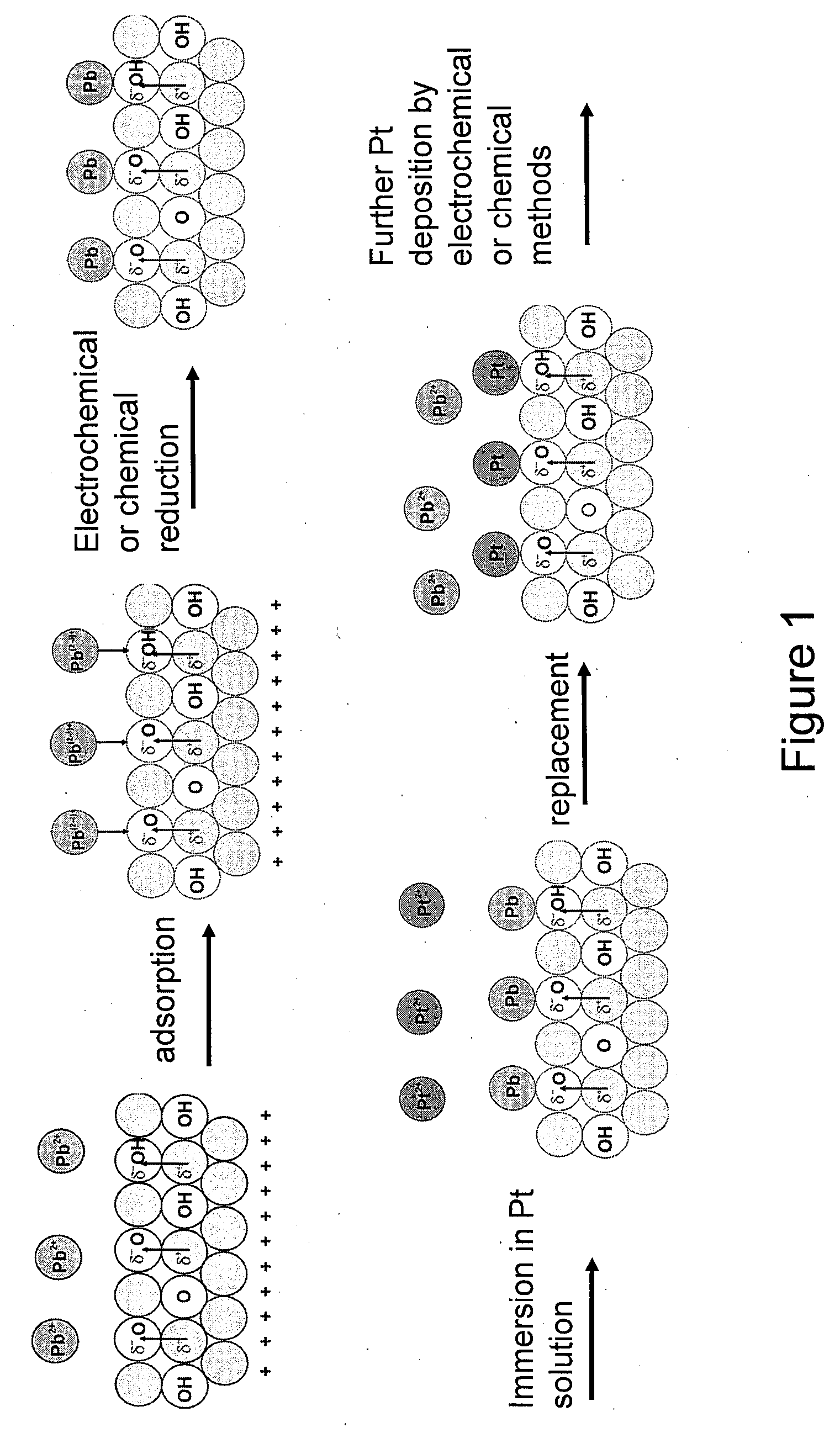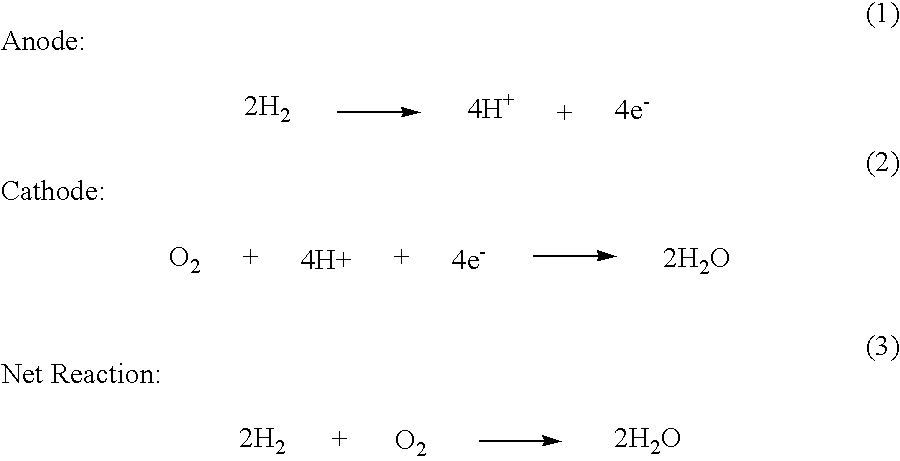Synthesis of Metal-Metal Oxide Catalysts and Electrocatalysts Using a Metal Cation Adsorption/Reduction and Adatom Replacement by More Noble Ones
a metal-metal oxide catalyst and electrocatalyst technology, applied in the direction of metal/metal-oxide/metal-hydroxide catalyst, catalyst activation/preparation, germanium dioxide, etc., can solve the problems of inability to stabilize the platinum electrocatalyst in the cathode during the operation of the fuel cell, concomitant dissolution of platinum ions, and depletion of platinum from the cathode, so as to prevent or redu
- Summary
- Abstract
- Description
- Claims
- Application Information
AI Technical Summary
Benefits of technology
Problems solved by technology
Method used
Image
Examples
Embodiment Construction
[0042] In one embodiment, the invention relates to platinum-metal oxide composite particles. In a particular embodiment, the platinum-metal oxide composite particles are composed, minimally, of a metal oxide core at least partially encapsulated by an atomically thin layer of zerovalent or partially charged platinum atoms. The “atomically thin surface layer” is a layer of zerovalent or partially charged platinum atoms, preferably of sub-monoatomic, monoatomic, diatomic, or triatomic thickness, or any combination thereof.
[0043] The atomically thin layer of platinum typically takes the shape of the metal oxide surface. Since a metal oxide carrier particle typically contains pores or channels on its surface, the atomically thin layer of platinum is typically non-continuous. For example, the platinum layer can be speckled with holes corresponding to such pores or channels. In addition, since the metal oxide surface contains at least two elements (i.e., metal and oxygen atoms), the plati...
PUM
| Property | Measurement | Unit |
|---|---|---|
| size | aaaaa | aaaaa |
| size | aaaaa | aaaaa |
| size | aaaaa | aaaaa |
Abstract
Description
Claims
Application Information
 Login to View More
Login to View More - R&D
- Intellectual Property
- Life Sciences
- Materials
- Tech Scout
- Unparalleled Data Quality
- Higher Quality Content
- 60% Fewer Hallucinations
Browse by: Latest US Patents, China's latest patents, Technical Efficacy Thesaurus, Application Domain, Technology Topic, Popular Technical Reports.
© 2025 PatSnap. All rights reserved.Legal|Privacy policy|Modern Slavery Act Transparency Statement|Sitemap|About US| Contact US: help@patsnap.com


